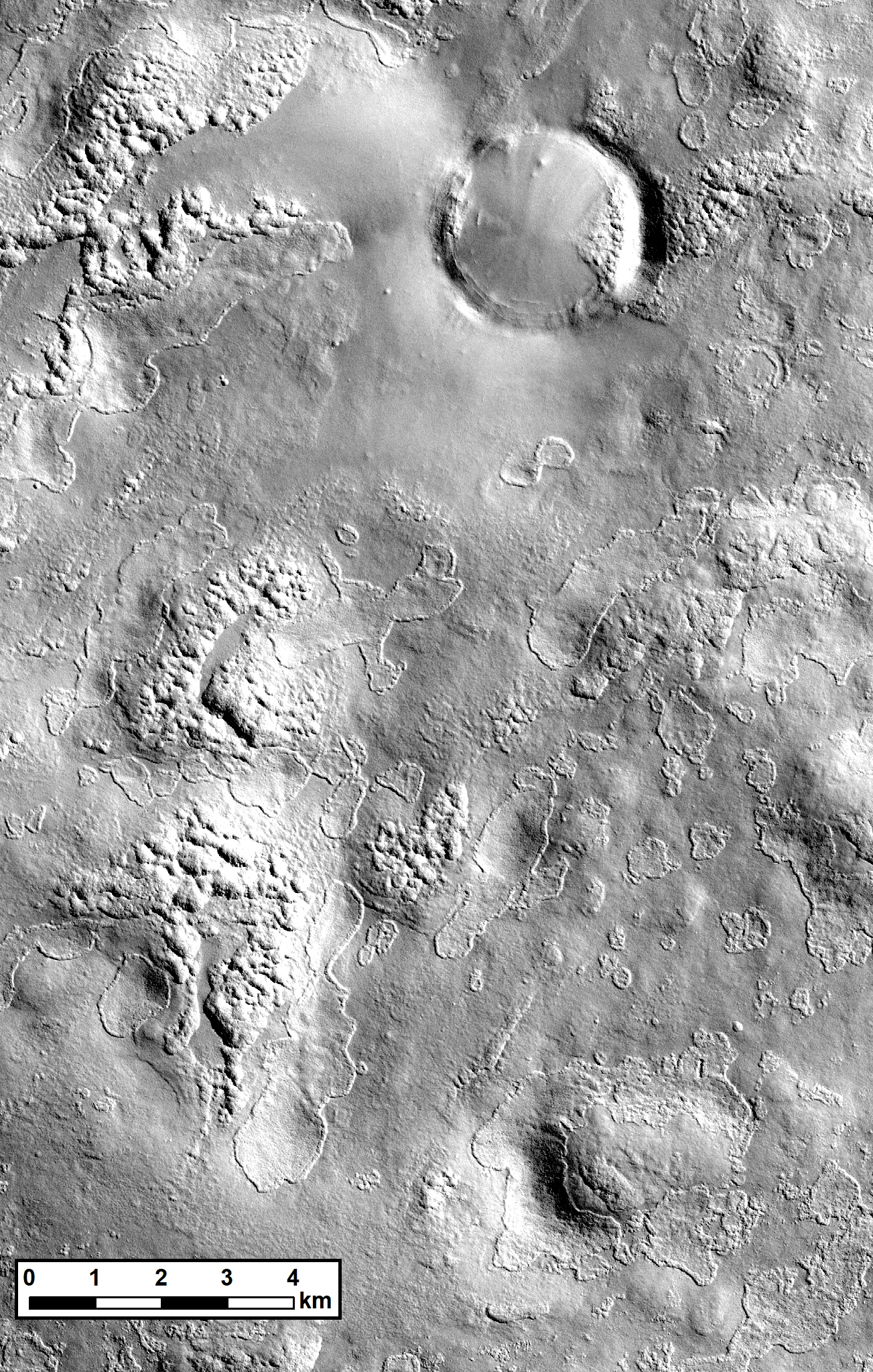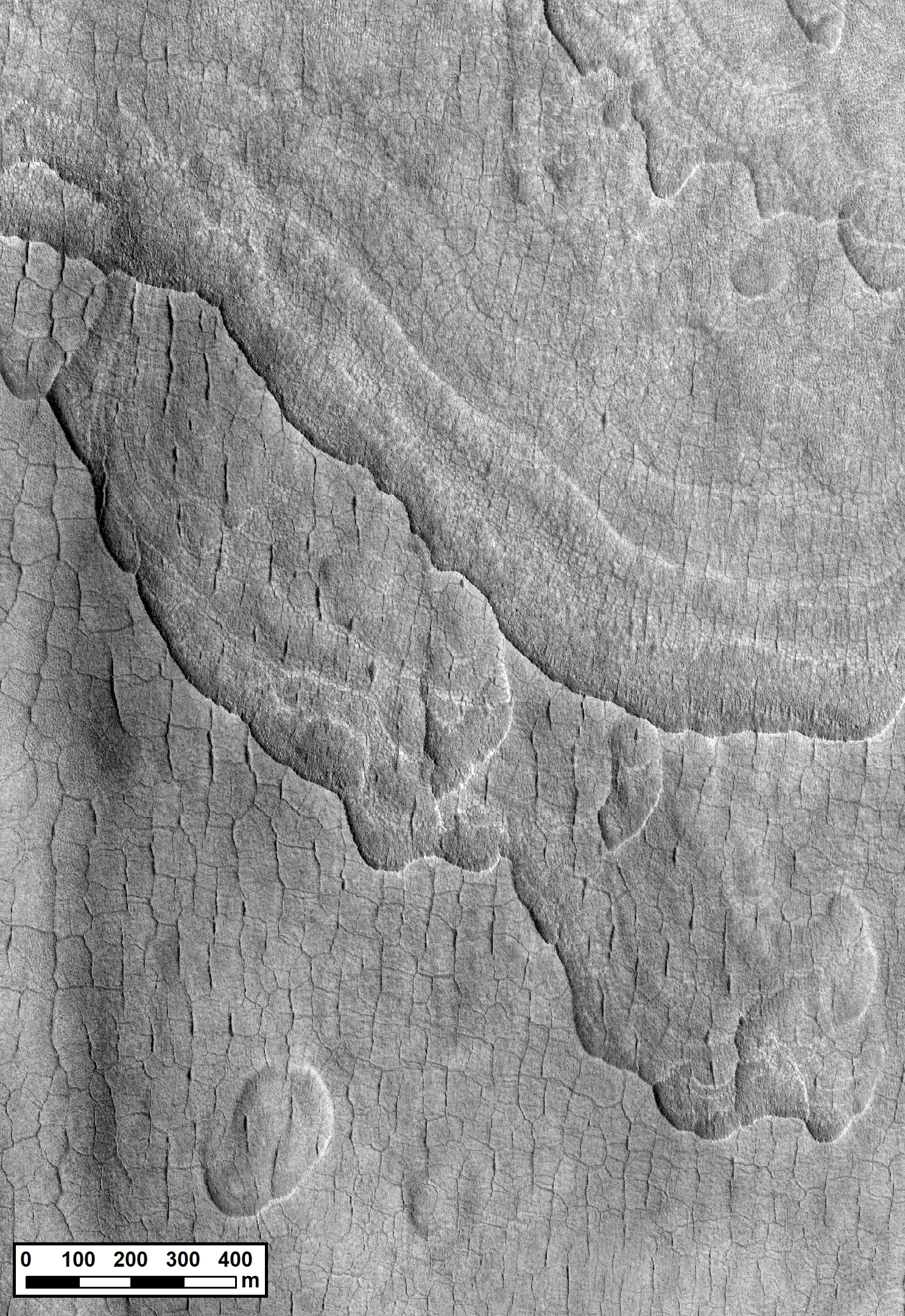
SWIM: About Pages
Curious about what SWIM is all about? Please explore the short articles, written by SWIM Team Members covering various aspects of the datasets included in the search for subsurface water ice on Mars.
Follow us on Twitter!Article List
Geomorphic Mapping
By: Drs. David Hollibaugh Baker and Gareth Morgan
Last Updated: 11/05/2020
Geomorphic mapping is a powerful tool to infer the presence of subsurface ice through the identification and analysis of assemblages of landforms that have been formed by and/or modified through ice-related processes. Our team is mapping the spatial distribution of glacial and periglacial landforms to help determine if ice existed or currently exists in the Martian subsurface. We are using a grid-mapping approach (Ramsdale et al., 2017) to efficiently survey these landforms across Mars between 60͒°S-60°N. We primarily use data obtained from the Mars Reconnaissance Orbiter (MRO) Context Camera (CTX) (Malin et al., 2007) and High Resolution Imaging Science Experiment (HiRISE) (McEwen et al., 2007) and derived products, including a global CTX image mosaic (Dickson et al., 2018).
Certain types of thermal contraction crack polygons are formed due to the presence of ice in the upper meters of the surface (Levy et al. 2010) and their presence is therefore being used to infer the spatial distribution of shallow ice at present or in the very recent past. Other small-scale terrains and landforms, such as sublimation-type pits and patterns (Milliken et al., 2003), are also being used to infer the presence of shallow ice.

Even deeper ice deposits are evidenced by large pits, cliffs and scalloped terrain carved into draping, dusty “mantle” deposits that are tens of meters in thickness (Morgenstern et al., 2007; Baker and Head, 2015; Dundas et al., 2018). While many of these landforms may be relicts of the past modification of ice-rich materials, it is likely that ice is still currently present at these locations. Impact craters are also natural probes that excavate and are modified by subsurface ice. Impact craters formed within the last decade expose shallow ice (Dundas et al., 2014), and older craters exhibit expanded rims (Viola et al., 2015), terraces (Bramson et al. 2015), and other interior structures (e.g., Baker and Carter, 2019b) that result from the presence of ice at the time of impact and the post-impact deposition of ice-rich materials.
The presence of glacial features are also being used to infer the distribution of even larger reservoirs of ice. Massive lobate debris aprons (LDA), lineated valley fill (LVF), and concentric crater fill (CCF) extend for tens of kilometers, have integrated flow-like patterns, and are hundreds of meters in thickness (e.g., Morgan et al., 2009; Baker et al., 2010; Head et al., 2010). Recent work combining geomorphology with SHARAD radar sounding data show that most of these features contain nearly pure ice throughout their thickness (Petersen et al., 2018) and have volumes comparable in scale to all the alpine glaciers on Earth (Levy et al., 2014). Younger and smaller glacial landforms, including viscous flow features (Milliken et al., 2003) and glacier-like forms (Sounness et al., 2012), contain ice in smaller amounts and restricted locations.
